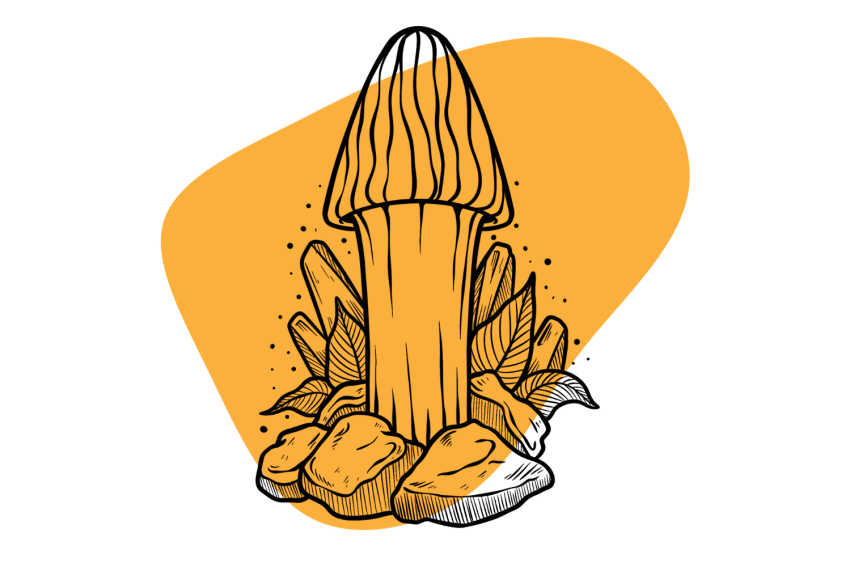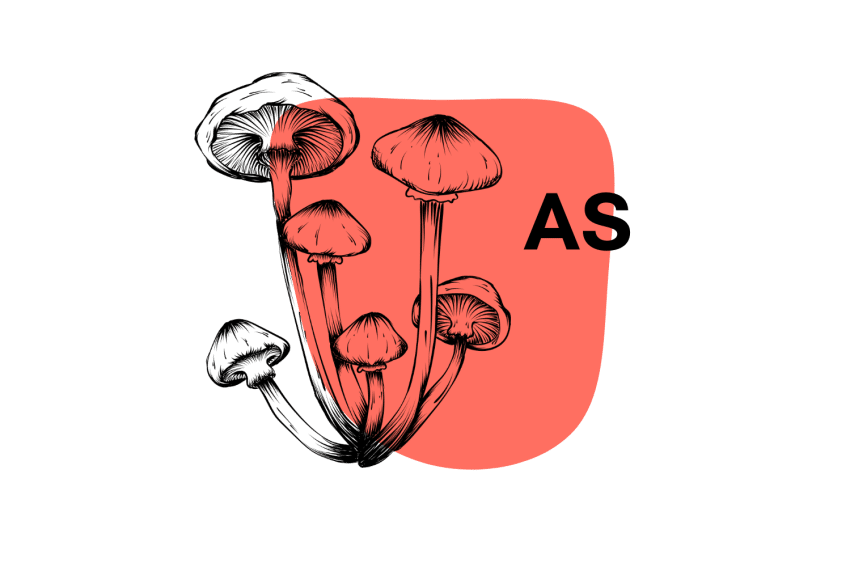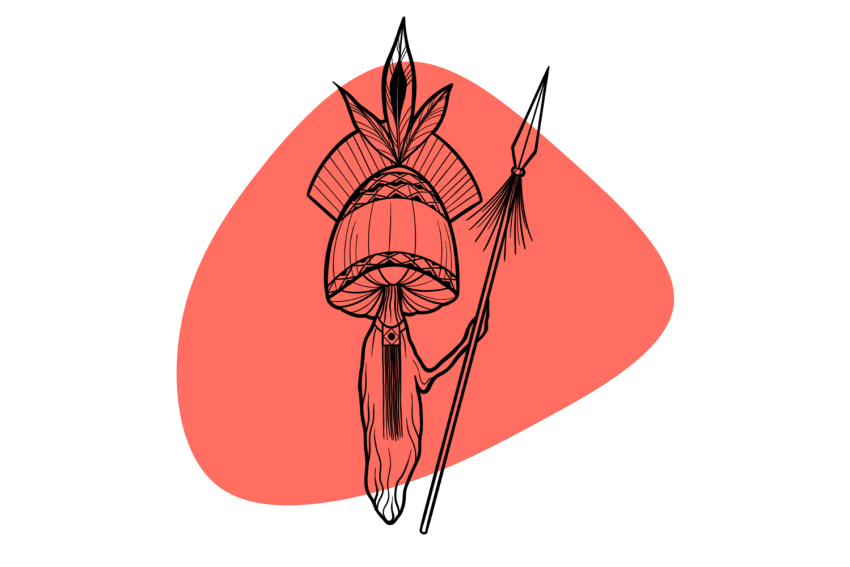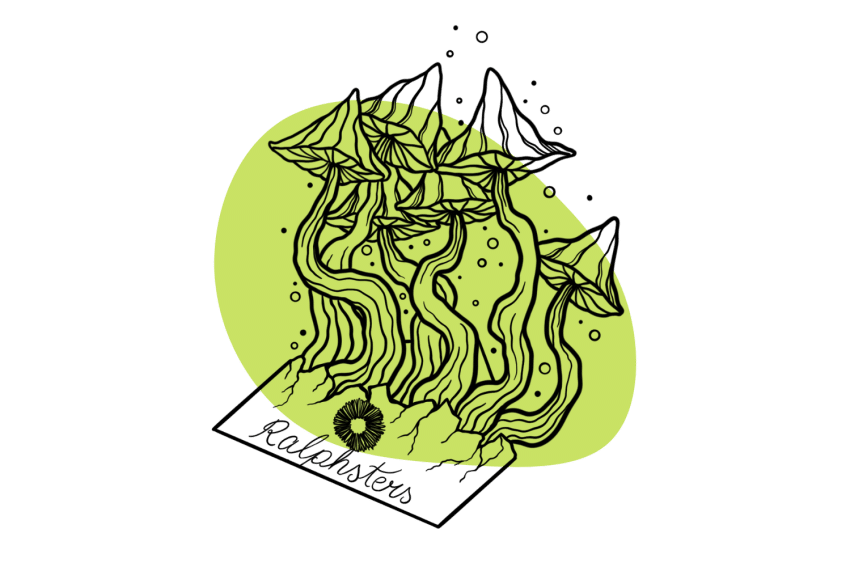Treasure Coast Shroom Strain: A Challenge to Grow But Super Potent & an Aggressive Fruiter
Rapid growth, powerfully-introspective effects, and a tendency towards leucistic growth — meet the Treasure Coast cubensis.

Treasure Coast shrooms refer to a specific variety of Psilocybe cubensis.
The strain was originally collected from the easter coast of Florida, which is often referred to as the Treasure Coast. The specific area on the coast is unknown, and there is no information about the mycologist or hobbyist who first collected and isolated the strain.
The Treasure Coast strain comes in two main forms — the original TC and an albino (leucistic) version.
The potency of this strain is often reported as being super strong — but quantitative testing shows it’s more likely on-par with average strains like Golden Teacher or Koh Samui.
Treasure Coast Shroom Specs
| Potency | Average 🍄 |
| Cultivation | Intermediate |
| Species | Psilocybe cubensis |
| Substrate Recommendation | Rye Grain or Brown Rice Flour |
| Cost | $ |
| Sold By | Ralphsters Spores, Sporeworks, Spores 101, Premium Spores |
Potency & Psilocybin Content
Expect average potency with the Treasure Coast strain — not weak, but not overly powerful either. The 2–3 gram dose range is most common for this mushroom.
Many reports online involving the Treasure Coast strain suggest it’s nearly twice as strong as common strains like Golden Teachers — however, we haven’t found this to be very accurate.
While limited, quantitative data also supports the idea that these shrooms are about as average as they come.
For example, two separate samples submitted to the Psilocybin Cup for testing showed an average of 0.59% psilocybin and 0.08% psilocin — for an average total tryptamine concentration of 0.67%. This places them right in the range of what we’d consider average (0.5% to 0.9%).
The strongest sample submitted contained 0.69% total tryptamines by dried weight.
Very potent cubes can test as high as 3.8% (Tidal Wave is the current record-holder).
Variations & Genetic Relatives
As mentioned above, there is only one variation of the Treasure Coast strain that has any kind of notoriety in the magic mushroom community: the Albino Treasure Coast strain.
The physical appearance of the albino variation is nearly identical, but the stems and caps appear entirely white rather than the caramel color you’d expect on the parent strain. The potency is equally as high.
There is also one other strain hailing from Florida that is believed to be a natural relative of the Treasure Coast strain: the F+ strain. This strain was collected from somewhere in Florida, although the specific place of origin and the mycologist who isolated it are unknown. Possibly because of the name that suggests it is low in potency, this is an unpopular strain.
Where to Buy Treasure Coast Shroom Spores
If you live in the United States, you’ll have plenty of options for where to purchase the Treasure Coast strain. You can get these genetics from Ralphster’s Spores, Sporeworks, and Premium Spores.
Spores 101 is one of the few places that carry this strain in Canada.
If you live in Europe, your best bet is to check Viking Spore, Kosmic Kitchen, and The Magic Mushroom Shop.
Related: How & Where to Buy Magic Mushroom Spores (Legally).
How to Grow Treasure Coast Shrooms
The Treasure Coast strain produces small but potent fruiting bodies in most cases, with shrooms measuring around two to five inches tall in most cases and caps spanning up to one inch. However, you can also get some fruiting bodies on occasion that grow up to ten inches tall.
This strain colonizes quickly, making it relatively resistant to mold and disease. It’s a super prolific fruiter, but only if you make it past the first flush. It has a tendency to abort before this point, which makes this strain a challenge for beginner cultivators.

If you can make it past the first flush, which is usually pretty underwhelming, the second and third flushes will tend to be much larger — providing you with a nice payoff for your patience.
For an in-depth guide on growing cubensis strains, check out our magic mushroom cultivation walkthrough.
Similar Strains
If you can’t get your hands on the Treasure Coast strain, or you love this variety and want something similar, the below strains are great options for you.

A+ Strain
The A+ strain was developed by Mr. G, who is one of the better-known mycologists in the magic mushroom community. This strain provides a similar potency to the Treasure Coast strain but is far easier to grow, making it suitable for both beginners and experienced cultivators alike.

Albino Treasure Coast
Of course, the Albino Treasure Coast strain is a good option if you want something similar in terms of potency and cultivation difficulty but need something a little more unique. These leucistic shrooms make for great pictures and still provide the decent amounts of psilocybin you’d expect from the parent strain.

Dixieland
Dixieland shrooms are named after the region in the Southern United States where the strain was originally collected. They’re believed to have originated in Mississippi. They provide a similar potency to Treasure Coast shrooms and look quite similar, with long, thin stems and bulbous caps. However, they’re more suitable for beginner cultivators.

Golden Teacher
Some magic mushroom users compare the potency of the Treasure Coast strain to Golden Teachers, which is probably the best-known strain available. This strain is also believed to come from the Gulf region of the United States, although the specific location remains a mystery.

Menace
The Menace strain was collected originally by P. Menace, a well-known user on the Shroomery forums. This strain hails from Houston, Texas, but its potency matches that of the Treasure Coast strain.
Strains vs. Species: What’s The Difference?
The word “strain” is used to define a distinguishable variety within a species that exhibits unique characteristics throughout multiple generations. These traits may include both physical appearance and chemical makeup.
Different strains of the same species can reproduce, but two organisms from a separate species cannot.

Examples of species and strains:
| Species | Strains |
| Psilocybe cubensis Psilocybe azurescens Psilocybe cyanescens Panaeolus cyanescens Panaeouls tropicalis Gymnopilus aeruginosus Gymnopilus purpuratus Pluteus villosus | Blue Meanies (Psilocybe cubensis) Aztec God (Psilocybe cubensis) Penis Envy (Psilocybe cubensis) Yeti (Psilocybe cubensis) Stargazer (Psilocybe cubensis) Amazon (Psilocybe cubensis) Dixieland (Psilocybe cubensis) Golden Emperor (Psilocybe cubensis) |
There are many different strains of magic mushrooms spanning several genera — yet the vast majority of magic mushroom “strains” refers specifically to varieties of psilocybe cubensis.
Final Thoughts: Treasure Coast Shrooms
The Treasure Coast shroom strain is one that we don’t know much about as a magic mushroom community. It was collected from the eastern coast of Florida, part of which is referred to as the Treasure Coast, but there is no information about who collected and isolated it.
The strain is best known for its high potency, which rivals many other top psilocybin producers and pales in comparison only to a select few, including Penis Envy. The strain is challenging to cultivate, given the high risk of pin aborts (mushrooms that start forming but don’t finish).
If you can make it past the first flush, you’re in for a massive yield.








